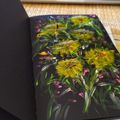Please login or subscribe for full access to this audio.
Read, Write & Connect With People
Join Us And Be Part of Something Big!
No record found
- 1,122,111 views
404: Article Not Found
It looks like nothing was found at this location. Maybe try a search or one of the links below?
No record found
- 1,120,620 views
TOP STORIES
EDITOR'S RECOMMENDED READING



Matthew Mccutcheon
7 months ago
I highly recommend Julie and A/X to anyone wanting to increase on-line exposure.

Sophie Chan
7 months ago
A/X Publisher Digital isn't just your ordinary read – it's a revolution. They've taken reading to a whole new level by adding ... read more
an audio feature, making it super easy to dive into their content. What's more impressive is how they bring people together, creating a space where everyone's voice is heard and valued. It's like they've cracked the code on making a magazine that's not just about articles, but about building a global community. A/X Publisher Digital's mix of different topics and the way they seamlessly blend in audio tech is something I've never seen before. They've set the bar high for where magazines are headed in the future!

Steven Fernandez
a year ago
I like how the magazine aims to be uplifting and inspiring - and even gives tips on practical, everyday, matters - yet,... read more
at the same time, is not afraid to tackle social injustice matters now and then.

Olivia Arnold
a year ago
A great place for authors to express themselves creatively. A/X is so supportive

Agness Walewinder
2 years ago
Ever since reading through Brittnay B's article on A/X Publisher Digital, I have found many awe-inspiring articles in this... read more magazine that have caught my attention! 💜 Thank you Julie for the wonderful blog! 🙏🏻

Benjie Dudgeon
2 years ago
A/X Publisher Digital is the best! The pricing structure is super-friendly and what you get for the price is so valuable. I... read more find it really easy to use and it's also really interesting checking out some of the content from the other contributors.
I would totally recommend A/X Publisher Digital if you want a clean, organised space to share your blogposts.
I would totally recommend A/X Publisher Digital if you want a clean, organised space to share your blogposts.

Dianne McRae
5 years ago
I love A/X Publisher Digital it's the best magazine and I return nearly everyday for a variety of topics and it really helps... read more Australian businesses be seen on the global map thanks Julie you're the best



Houston Dunleavy
6 years ago
There are so many new things for me to learn here - new ways to think about how I might market myself as an artist; new... read more ways to package information about my life and work; new ways to vault over disciplinary lines and spread the word about my work and new techniques and ways of thinking about my methods of production and new thoughts about the structure, language and practice of cross-disciplinary collaboration.


Rakesh Sharma
7 years ago
Its something different and class too !! .....though i m little busy so could not see fully but first look is impressive

Adam Kopacsy
7 years ago
Striving to break the mythical chain of 'the starving artist', Art Xtedia is a team dedicated to promoting and... read more networking for artists and creative professionals.
We can do better together! UNITE, CREATIVE SOULS!
We can do better together! UNITE, CREATIVE SOULS!


Welcome
Once you're logged in listen to full audio
No Account? Click Here
Click “Sign In” to agree to A/X Publisher Digital Terms of Service and acknowledge that A/X Publisher Digital Privacy Policy applies to you.